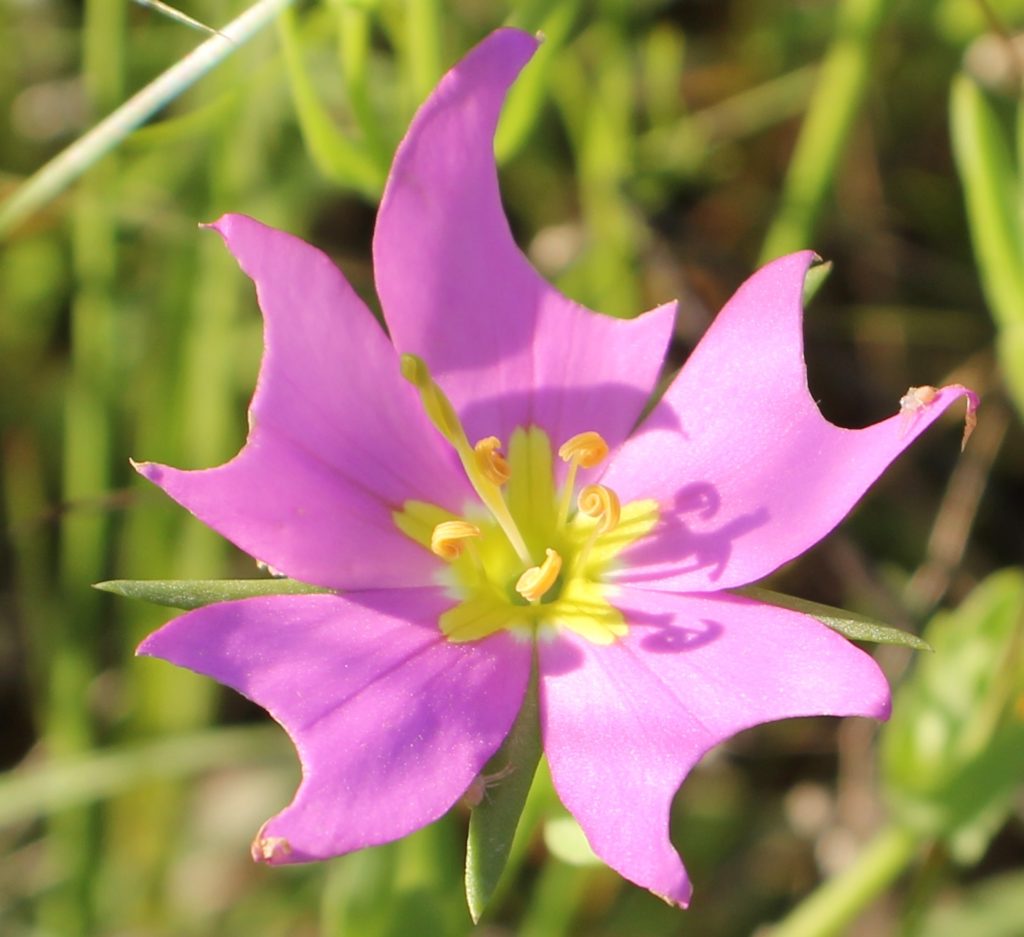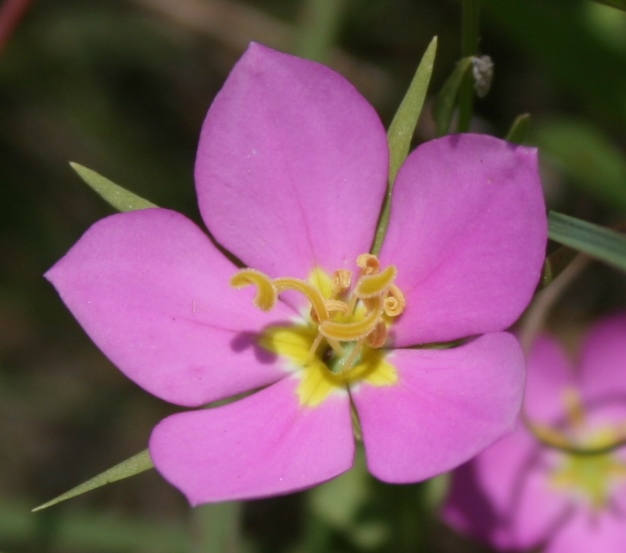Sometimes there’s a lot going on in one square inch. Of course if you are standing in the middle of a pretty nice bit of prairie, your odds of finding a really interesting square inch increase, but I’m betting that if you pulled up a lawn chair and really watched the comings and goings in your local sidewalk cracks, there’d be a lot more going on there than you expected.
Here’s a single square inch example, and I have more, but I think I’ll space them out instead of making one mega-post. Whenever I feel like a quick post I’ll find another square inch.

You might have seen this picture in yesterday’s post about Butterflyweed and Leafcutter Bees, but there’s lots more happening here in this square inch. Did anyone see the two Crab Spiders lurking in this picture? There’s a very small one on the tip of the petal at the upper right. It’s taking advantage of the fact that it blends in pretty well with the dried out frayed tip of the petal where it’s been cut by the Leafcutter Bees. There’s at least one more Crab Spider that’s harder to see. Why? Because our eyes are naturally drawn to the bold bright colors of the flower. It’s behind the flower petals half hidden at the center bottom. They are ambush hunters, simply waiting for insects to happen along. They wait on flowers, where the insects will be heading to feed, and Crab Spiders don’t seem too picky about what they catch.
How about the two-toned color splotches in the center–the white and the yellow markings? The yellow markings are centered on the petals, but the white ones are shared between two adjacent petals. These markings may be nectar guides for bees that look completley different to them than they do to us. They can see more wavelengths of light than we can.
Anything else? Well, yes, but the next thing isn’t apparent unless you come back later. See the reproductive parts in the center? There are curved anthers (five of them) for the pollen, and one twisted style in the center. Here’s one that isn’t clipped by Leafcutters to illustrate the centers at this stage.

This Meadow Pink, Sabatia campestris, has an interesting strategy to keep from pollinating itself. Lots of plants have different ways to do this. My wonderful friend Shirley Lusk first brought this to my attention, and I remember her fondly whenever I see this again. In the Meadow Pink, the two parts of the stigma stay neatly twisted together until the pollen has already been dispersed and the anthers begin to dry. Then, they untwist and reveal the receptive surfaces that will accept pollen from other flowers of the same species. It’s a way to keep the gene pool mixing as much as possible and prevent genetic stagnation. Viewed later, you would see two helix shapes instead of one twist.
Here’s one that has already unfurled. You can see the fuzzy receptive surfaces that had been zipped together to keep the flower’s own pollen out. Now they are ready to collect pollen brought from another flower.

There’s a lot going on in a square inch sometimes. Slow down, have a look, and find an inch near you.